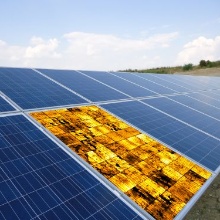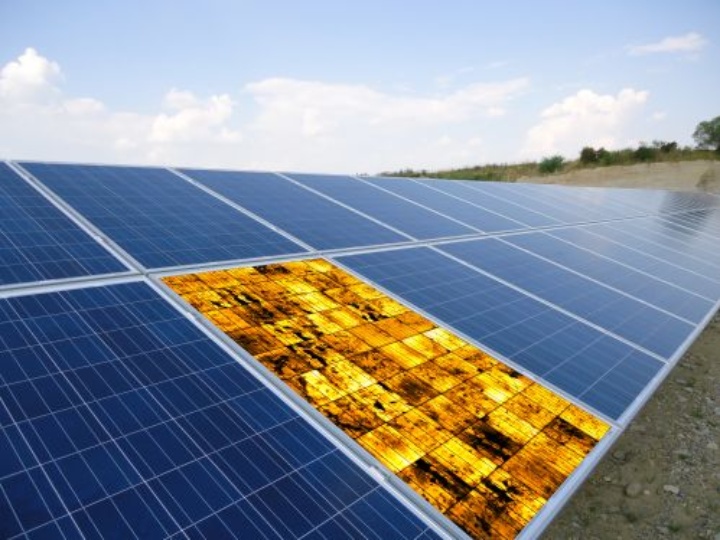Scientists at the Institute of Photovoltaic at the University of Stuttgart have developed an innovative method, enabling damage to the photovoltaic modules to be revealed quickly, above all for the first time also independent of lighting conditions with the help of luminescence images.
The Stuttgart Solar Centre, a working group from the Institute of Photovoltaic at the University of Stuttgart and the Steinbeis Centre for Photovoltaic, integrated together with HighFinesse GmbH the daylight luminescence method into the measurement system DaySy. This enables the luminescence to also be measured for the first time during the day.
A solar cell generates power from light and vice versa light from power. However, the solar cell only shines in places in which it is intact. This electrical luminescence is, however, not visible to the human eye. In the image of a camera optimised for the solar cell luminescence, the dark places reveal where there are defects.
Before new photovoltaic modules leave the factory, they are checked for defects as standard
practice. However, damage could already occur on the transport route in the form of micro cracks
and cell breakages. Incorrect assembly adds other defects. This damage generally only becomes
noticable after several years in the form of reduced output. Exchanging badly damaged modules is
advisable since they could have a disproportionate impact on the performance of the system.
Up to now defective PV modules were able to be ascertained either by means of a thermal
imaging camera; however, this could only be done from a solar irradition exceeding 700 W/m², or by
means of electrical luminance. The latter procedure was, however, only successful in the evening or
at night since during the day the solar irradition superimposes the considerabley weaker
luminescence of the systems.
The daylight luminescence method DaySy not only functions irrespective of daylight; it can also clearly classify the type of damage through the combination of electrical luminescence and photo luminescence measurements. After a short measurement time of approx. 30 seconds per module, DaySy ascertains the most frequent defects occuring with photovoltaic systems: broken cell connectors, (micro-) cracks, inactive cell surfaces, losses through series resistances, bad weak light conditions as well as potential-induced degradation (PID).
Further information:
Stuttgart Solar Centre – a working group from the Institute of Photovoltaic at the University
of Stuttgart and Steinbeis Centre for Photovoltaic -
Tel. 0711/315 89 433
Dipl. Ing. Liviu Stoicescu, liviu.stoicescu(at)solarzentrum-stuttgart.com
Dr.-Ing. Michael Reuter, michael.reuter(at)solarzentrum-stuttgart.com
Bettina Neumann, University of Stuttgart, Department University Communication, Tel. 0711 685
82192, Email: bettina.neumann@hkom.uni-stuttgart.de



